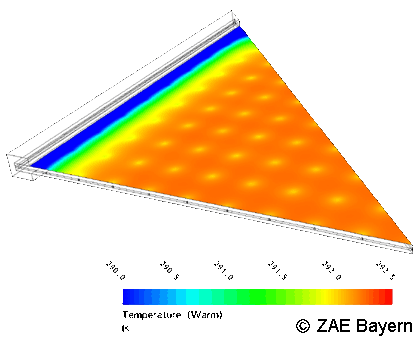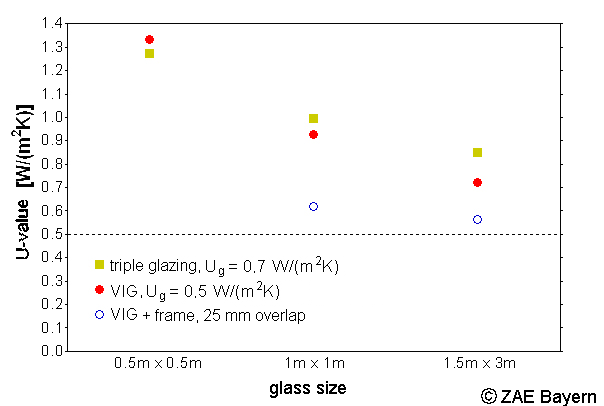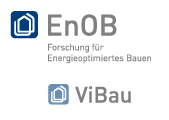Vacuum Insulation Glass: Edge effects
The excellent insulating effect of vacuum insulation glass (VIG) is due to the
low gas pressure between the panes of glass. The edge seal must be made accordingly
gas-tight. To this end, the two panes of glass are usually joined by metal or
glass seals so that a thermal bridge occurs. The influence of the edge seal
is represented in the illustration below. The surface temperatures are reduced
despite the fact that the edge seal is covered with a highly-insulating frame.

Simulation of the heat transfer through vacuum insulation glass (VIG).
Easily recognizable are the thermal bridge effect of the supports between
the panes (yellow dots) as well as the strong influence of the edge seal
(blue area). The edge seal here has already been covered by a highly-insulating
frame.
The influence of the edge seal is dependent on the size of the glass panes.
Large dimensions are thermally more favourable since the edge seal makes up
less of the total surface. VIG must nevertheless be integrated into a highly-insulating
frame construction. Such highly-insulating frame constructions are currently
being developed within the framework of a
project
funded by the German Federal Ministry of Economics and Technology.

Calculated U-values of two glazing systems (VIG and triple glazing) including
the influence of the edge seal for different glass sizes. The blue circles
show the potential for optimization by using a highly-insulating frame construction.
The dotted line shows the Ug-value of VIG without the influence
of the edge seal.




